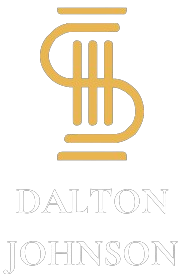Welcome to Dalton Johnson’s legal resource blog, where we provide valuable insights and information on navigating complex legal processes. In this post, we’ll explore the intricacies of Multi-District Litigation (MDL) in the context of mass tort cases and offer guidance on how to navigate this specialized area of law.
Multi-District Litigation (MDL) is a procedural mechanism used in federal courts to consolidate and streamline the handling of multiple related lawsuits filed in different jurisdictions across the country. MDL centralizes pretrial proceedings before a single federal judge, known as the MDL judge, to promote efficiency, avoid duplicative discovery, and ensure consistent rulings.
The MDL process begins when a panel of federal judges determines that multiple lawsuits involving similar factual and legal issues should be consolidated for pretrial proceedings. Once centralized, the MDL judge oversees various aspects of the litigation, including case management, discovery disputes, and the resolution of legal issues common to all cases.
One of the primary benefits of MDL is the efficient management of complex litigation involving numerous plaintiffs, defendants, and legal issues. By consolidating similar cases, MDL helps avoid inconsistent rulings, reduces litigation costs, and expedites the resolution of disputes, ultimately benefiting both parties and the court system.
However, navigating MDL can be challenging due to its procedural intricacies and the involvement of multiple parties with divergent interests. Plaintiffs and defendants must comply with specific rules and procedures governing MDL proceedings, including coordination of discovery, coordination of bellwether trials, and negotiation of settlement agreements.
For plaintiffs, participating in MDL offers several advantages, including access to consolidated resources, enhanced bargaining power in settlement negotiations, and the opportunity to benefit from precedents set by early trial outcomes. However, plaintiffs must also be prepared to navigate the complexities of MDL, including coordination with co-plaintiffs, adherence to pretrial deadlines, and cooperation with their legal team.
For defendants, MDL presents an opportunity to efficiently address multiple claims arising from similar allegations while minimizing the risk of inconsistent rulings and excessive litigation costs. However, defendants must also be proactive in defending against claims, engaging in strategic settlement negotiations, and complying with court orders and deadlines.
In conclusion, Multi-District Litigation (MDL) is a vital tool for managing complex mass tort cases efficiently and effectively. By understanding the nuances of MDL and working closely with experienced legal professionals, plaintiffs and defendants can navigate this specialized area of law with confidence and achieve favorable outcomes in their mass tort cases. Stay tuned for more insights and updates on mass torts from Dalton Johnson’s legal resource blog.
